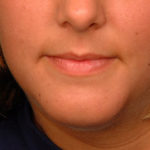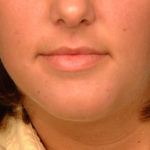The location and prominence of the chin makes it a most visible facial part. It has a significant influence on the appearance and perception of one’s face. While it is recognized that a chin can be horizontally short or too long, and even vertically too short or too long, its position and shape is also impacted by its width. The transverse position and shape of the chin affects its perception of being midline or symmetric. An asymmetric chin is easily identifiable and can make the face look skewed or off center.
When the chin is asymmetric, the first step is to determine whether this is a result of an overall jaw asymmetry or whether it is restricted to just the chin. Some jaw problems are correctable and the chin will swing back to the midline when that is done. But while many chin asymmetries are due to one side of the jaw being shorter than the other, the patient may have no desire to undergo such corrective jaw surgery.
Chin asymmetry can be corrected through two basic approaches. Camouflage it with the placement of an implant on top of the bone or move the chin bone itself. (osteotomy) Either approach has its advantages and disadvantages.
While the use of an implant is simpler, it is more difficult to get good and accurate placement in some defects. Unlike a typical chin implant placement, the implant placement in chin asymmetry must be…..asymmetric. Either the implant must be placed in an asymmetric fashion or the implant itself must be shaped asymmetrically. That determination must be made intraoperatively and often involves a little bit of both. The modified chin implant must be secured into position with not one, but two screws, to ensure it does not move from its critical position. This works best when the chin has a transverse or frontal deficiency. While some chin implants are placed through an intraoral incision, correction of chin asymmetries with implants should be done from a submental incision underneath the chin where the entire shape of the chin can be bettered appreciated from below as well as from a front view.


Dr. Barry Eppley
Indianapolis, Indiana



